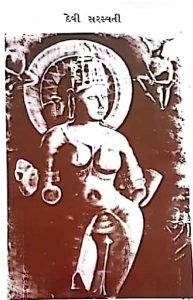
Gozaria, situated in the Western Indian State of Gujarat is a small village 31 kms away from Gandhinagar i.e. the state capital on the Ambaji highway. This small village in northern Gujarat with a population of 13,933 had total literacy rate of 81.3% as per the census 2011. It had its first school in 1883, a village library establis
hed in 1915, which is a very significant feature of villages in the erstwhile Gaekwad State of Baroda. The Public Trust named Gozaria Kelavani Mandal was established in 1937 and it had its first AV primary school in 1937,with its chief patriarch being Late Shree Ramchandra Jamnadas Amin who was Minister for P.W.D. and Electricity, Baroda State and member of Bombay Legislative Assembly. This is the Land where Sri Aurobindo stayed in 1894 on one of his trips of North Gujarat.
Let’s have a glance at the historical landmarks in the multi-sided journeys of Gozaria. Formerly Supervisor of Gozaria High school and art-lover at heart, Mr. Ashvinbhai Patel found an artistic idol of Vagishwari Devi Sharda in the area surrounding the temple of Goddess mother Ambe. The photograph of this idol is as under:
The pond near this temple is known as ‘Bheem Talav’ and keeping this information in mind it is surmised that the village of Gozaria might have located in the area surrounding the temple of Goddess mother Ambe. Although this village is considered as the rural area, many of its representatives have made the sky as their limit for their individual as well as the collective cultivation of their motherland. Many young men of the land have carried out mercantile enterprises overseas and by virtue of working tooth and nail they attained affluence even there. The biggest example is that of Sheth Shree Patel Lalbhai and Sheth Shree Patel Somabhai, whose generous charity lies at the very foundation of Shree Gozaria Kelavani Mandal, formed in 1937.
